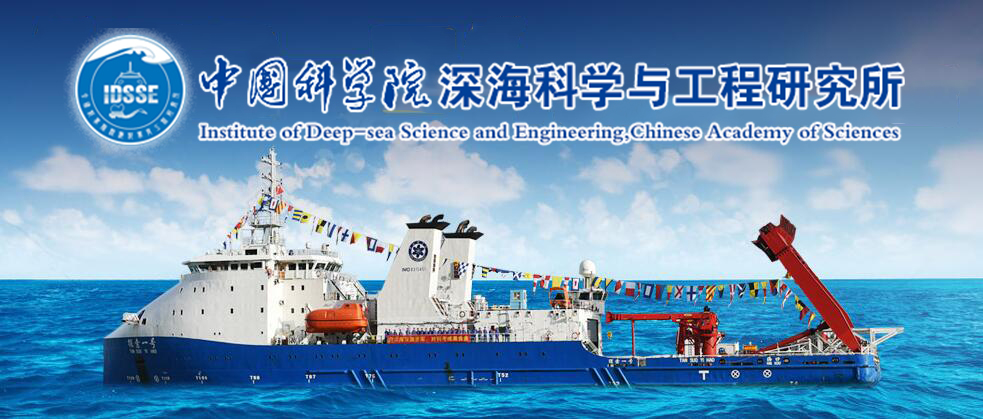
| 论文题目 | Extremely light molybdenum isotope signature of sediments in the Mariana Trench |
| 论文题目(英文) | Extremely light molybdenum isotope signature of sediments in the Mariana Trench |
| 作者 | 陈顺;彭晓彤;Li, Jie;Lin, Zhiyong;Li, Hongyan;Wei, Gangjian;Li, Xiang;他开文;Dasgupta, Shamik;许恒超;杜梦然;李季伟;Liu, Yang;周俊烈;柳双权;张健 |
| 发表年度 | 2022-09-05 |
| 卷 | 605 |
| 期 | |
| 页码 | 9 |
| 期刊名称 | CHEMICAL GEOLOGY |
| 摘要 | |
| 摘要_英文 |
Molybdenum (Mo) isotope signature (δ98/95Mo) of marine sediments is a powerful proxy for constraining marine redox conditions and early diagenetic processes. Oxic pelagic sediments have been increasingly acknowledged as an important sink for Mo in its global cycling, however, the mechanisms controlling Mo enrichment and isotope fractionation during early diagenesis in this environment are not fully understood. In this study, four sedimentary cores were sampled by full-ocean-depth lander system in the Mariana Trench, aiming to explore the processes controlling Mo partitioning in the sediments of the deepest ocean in the world. Sediments from four locations exhibit a wide range of authigenic Mo contents (Moauth, relative to continental crust), varying from 1.98 to 43 mu g/g. A positive relation between Mo and Mn contents was identified for these sediments, which suggests that Mo are mainly hosted in Fe-Mn (oxyhydr) oxides. In addition, negative correlations between δ98/95Mo values and Mo/Mn ratios are found at each site. The δ98/95Mo values of the sediments vary from-1.71 +/- 0.05 to -0.15 +/- 0.04‰, revealing similar trends towards lighter values with burial depth from three sites. However, throughout the sediment core TY41 obtained from Mariana Trench, the δ98/95Mo values of sediment remain nearly constant around -0.55‰. Supported by the abundant Fe (oxyhydr) oxides throughout this site, it is likely the sediment is affected by enhanced fluid exchange across sediment-seawater interface, and the δ98/95Mo values of dissolved Mo in pore water resemble seawater signature. Therefore, the Mo isotopic offset between dissolved Mo and sediment is similar to the expected fractionation during the adsorption to Mn oxides (similar to+ 3.0‰) and hematite (similar to+ 2.2‰), which suggests that most of the dissolved Mo is scavenged by Mn oxides and/or hematite. The extremely light δ98/95Mo values of sediments in deeper parts of the cores coincide with enhanced Mo accumulation. This indicates an even lighter isotope signature of dissolved Mo in pore water during the re-precipitation of Fe-Mn (oxyhydr) oxides upon an isotopic equilibrium for Mo adsorption to metal oxides. Both the patterns of both dissolved oxygen and nitrate suggest that the study sites are located within the nitrate reduction zone and Mn reduction occur at deeper depths below the studied interval. Therefore, the source of the isotopically light dissolved Mo in pore water was explained by the preferential release of isotopically lighter Mo from Fe-Mn (oxyhydr) oxides during the enhanced dissolution at deeper depth. In contrast, at the shallower depths of these cores (expect for core TY41), the higher δ98/95Mo values towards seawater-sediment interface suggest the dissolved Mo is more impacted by the seawater exchange. This study provides a deeper insight into the diagenetic Mo cycling in trench environments, with Fe-Mn (oxyhydr) oxides rich sediments as an important sink for Mo.
|

Copyright © 中国科学院深海科学与工程研究所 备案证号:琼ICP备13001552号-1
 琼公网安备 46020102000014号
琼公网安备 46020102000014号
地址: 三亚市鹿回头路28号 邮编:572000 网站维护:深海所办公室 邮箱:office@idsse.ac.cn